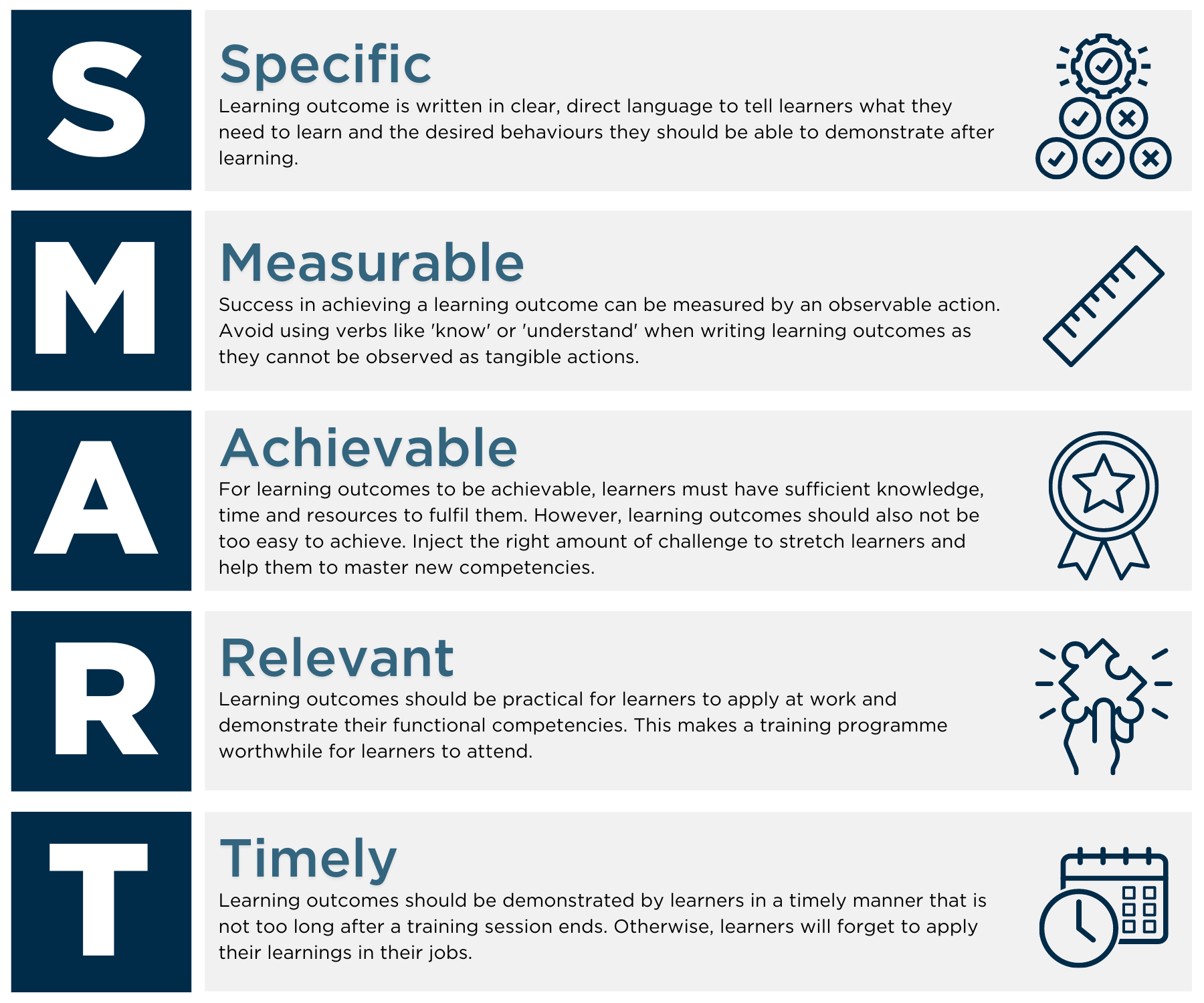
Introduction
What’s happening and why?
Missouri Online has been busy this summer preparing a new opportunity for instructors – the Sprint Ahead: Online Faculty Development Certificate – consisting of design, assessment, and community badges made up of focused and autonomous sprints. Additional sprints and badges on an array of teaching and learning topics are planned for the future. Each of these sprints incorporates the latest scholarship of teaching and learning research and asks participants to design and/or develop instructional materials that align with current best practices.
In our development of an assessment-based sprint centered on improving objectives, our team came to the conclusion that it is time for Missouri Online instructional designers to shift our language. We will now begin to use “learning outcome” instead of “learning objective” to describe the student-centered measurable and specific statements used to define the knowledge, skills, and attitudes learners exhibit after instruction.
Missouri Online instructional designers will begin using “learning outcome” instead of “learning objective” to describe the student-centered measurable and specific statements used to define the knowledge, skills, and attitudes learners exhibit after instruction.
We do, however, acknowledge the definitional power of learning outcomes and how that reflects dominant values and perspectives of education (Prøitz, 2010). Our intention in making this internal shift in terminology is to ensure that Missouri Online’s work aligns with and reflects contemporary scholarship. Read on to learn more about these terms, their differentiation, and our plan moving forward at Missouri Online.
Background
Prøitz (2010) noted the beginning of a paradigm shift from objectives to outcomes during the late 1990s and early 2000s, characterized by a change in emphasis from teaching to learning. As such, objectives describe the intention of an instructor, while outcomes specify the results or consequences achieved by students (University of Connecticut, 2016). Outcomes therefore illustrate areas that can be accredited to the student and formally assessed (Allan, 1996), offering a starting point for a backward design of curricula development.
Goals vs. Objectives vs. Outcomes
The terms outcomes, goals, and objectives are all related to the learning process – but which term should you be using and when? While they are often used interchangeably in the teaching and learning process, the difference in terminology lies in who will be doing the activities. Goals and objectives describe what the instructor, department, program, and/or course aim to do, but the outcome describes in a measurable way what a student will be able to do.
Goals |
Objectives |
Outcomes |
|
Broad statements that create the course overview/big picture |
Statements that describe an instructor’s intentions and expectations for student work |
Specific statements that describe what students will do to demonstrate competency |
Crafting Learning Outcomes
How do we, as instructors and course designers, know whether or not students have achieved competency if we don’t have a definition of success? The mnemonic SMART (Specific, Measurable, Attainable, Relevant, and Time-bound) can be used to describe the elements of a well-written learning outcome that illustrates student success (Skrbic & Burrow, 2014).

(Image adapted from Civil Service College)
Additionally, outcomes provide the following benefits:
1. Outcomes communicate specifically what students should be able to do post-instruction.
For example, students in an entry-level business technology course can have a clear idea of what skills they will gain by successfully completing the course with the following course-level outcomes.
By the end of the course, students will be able to:
- Critique how organizations utilize and improve computer and communications technology.
- Apply technology to support business planning, operations, marketing, strategy, and decision making.
- Analyze how businesses use the internet, social media, and technology to connect with customers and employees, market and deliver their products, and create a competitive advantage.
2. Outcomes tell students what is important.
While everything taught within a class is important (otherwise we wouldn’t be teaching it, right?), outcomes quickly signal to students a hierarchy of importance and help students strategize where they should focus their time while studying the course materials.
3. Outcomes offer guidance to students as they work through the course and assess their own learning process.
Lastly, clear, specific, and measurable learning outcomes provide a guide for students when reviewing materials and preparing for assessment. Module-level outcomes are most beneficial and powerful if they are measurable and clearly support the course-level outcomes. For example, the following module-level outcomes relate back to the first course-level outcome detailed above:
By the end of this module, students will be able to:
- Explain the history and impact of the internet on business communications.
- Compare and contrast how three organizations (Xerox, Microsoft, and Meta) incorporated telecommunication into their business.
- Write an internal memo outlining deficiencies in your chosen organization’s use of communication technologies.
Plan for moving forward at Missouri Online
As a first step, all of our focused and autonomous sprints will use outcomes-oriented language. Moving forward, we will consult with faculty advisory groups and other stakeholders before beginning to update our language across this website and our internal forms. We hope to have these updates completed within the next few months.
~ Laura March, Instructional Design Manager
~ Bryant “Laz” Lazenby, Instructional Designer
~ Emily Goldstein, Director of Instructional Design
